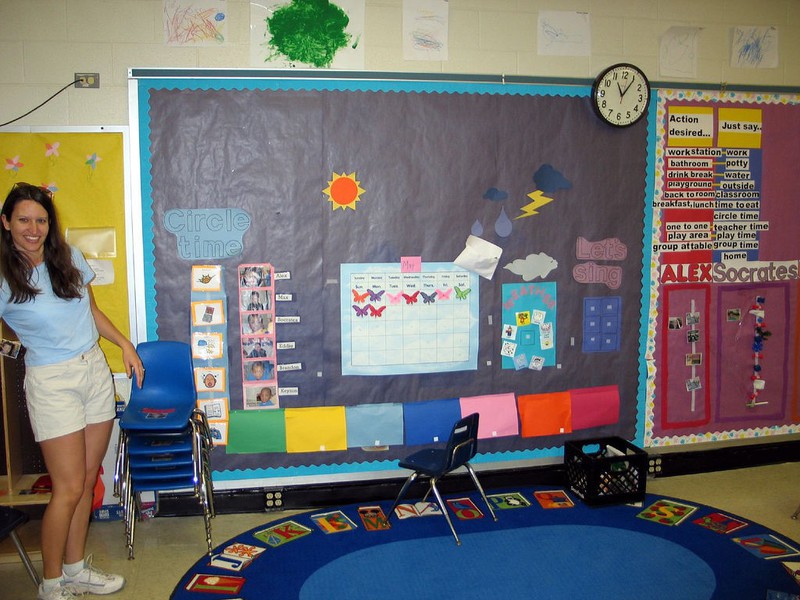Accommodating Learning Styles
Accommodating Learning Styles
Topic 3: Accommodating Learning Styles

(Source: "robins_classroom1" by Andy Ciordia, used under CC BY-NC 2.0)
Library programs, events, activities, and lessons (especially in school libraries) can cause discomfort for library users who have autism if organizers do not give careful attention to the needs of all participants. In particular, failure to comprehend content or directions can lead to frustration that can quickly escalate, and the uncertainty that is inherent in anything new could also cause anxiety. Often, people with autism struggle with change, so routine is essential. Ensuring smooth transitioning from one activity to another is also very important.
The following are strategies that have been shown to help alleviate some of these issues for people with autism.
- Avoid rigid rules; be flexible in expectations, but do provide behavior expectations for the activity, preferably with visual reminders/reinforcements. For example, "We keep our hands to ourselves" is an appropriate expectation that should be enforced, but "stay seated" may be too rigid. Be flexible in accepting behaviors that are not harmful to others.
- Know that students/participants may still be learning and paying attention even if they are not looking at you or are engaged in other activities (such as playing with/focusing on a hand-held object).
- Use visual timers for the various parts of the activity or lesson. For example, "We will have 15 minutes of coloring before I will need your attention again." Then set the timer and have the count-down visible, whether by projecting it or setting the timer in proximity to those who need it.
- Prepare a schedule for the event, activity, or lesson (with time frames) and present it in a visual way. You could provide a copy to each person who needs it as well as one large version visible at the front of the space so that all could see. Reference the schedule regularly, such as moving a magnet or clothespin from one activity to the next so that it is always clear where we are in the agenda.
- Consider alerting participants who have autism that a transition is coming (ahead of time) so that they are very prepared for the transition. A consistent, agreed-upon signal would be much appreciated.
- Keep instructions clear, simple, and represented in multiple formats, including oral, written, and visual.
- If the event or activity is for children, use singing and rhythm games to get the children's attention and to communicate content. If you want the child to remember something from a lesson or orientation, try to present the information musically, especially with a rhyming song. People with autism who heavily use echolalia to communicate can especially benefit from this.
- Provide as many visual aids as possible, including photographs, hand gestures, and videos. Boardmaker® software can assist presenters in creating attractive visual cues and visual enhancements for story time.
In an earlier activity, you searched the web for images of what people are doing with Boardmaker® software. Look back at your answer to the question, "What else could you do with these visual images to support children with autism?"
Now, we see that visual schedules could be made for lessons and group activities, posters with behavior expectations could be made, and instructions could be created visually. You can go back now and add these if you didn't already have them listed. If you already predicted these some or all of these uses, WELL DONE!
